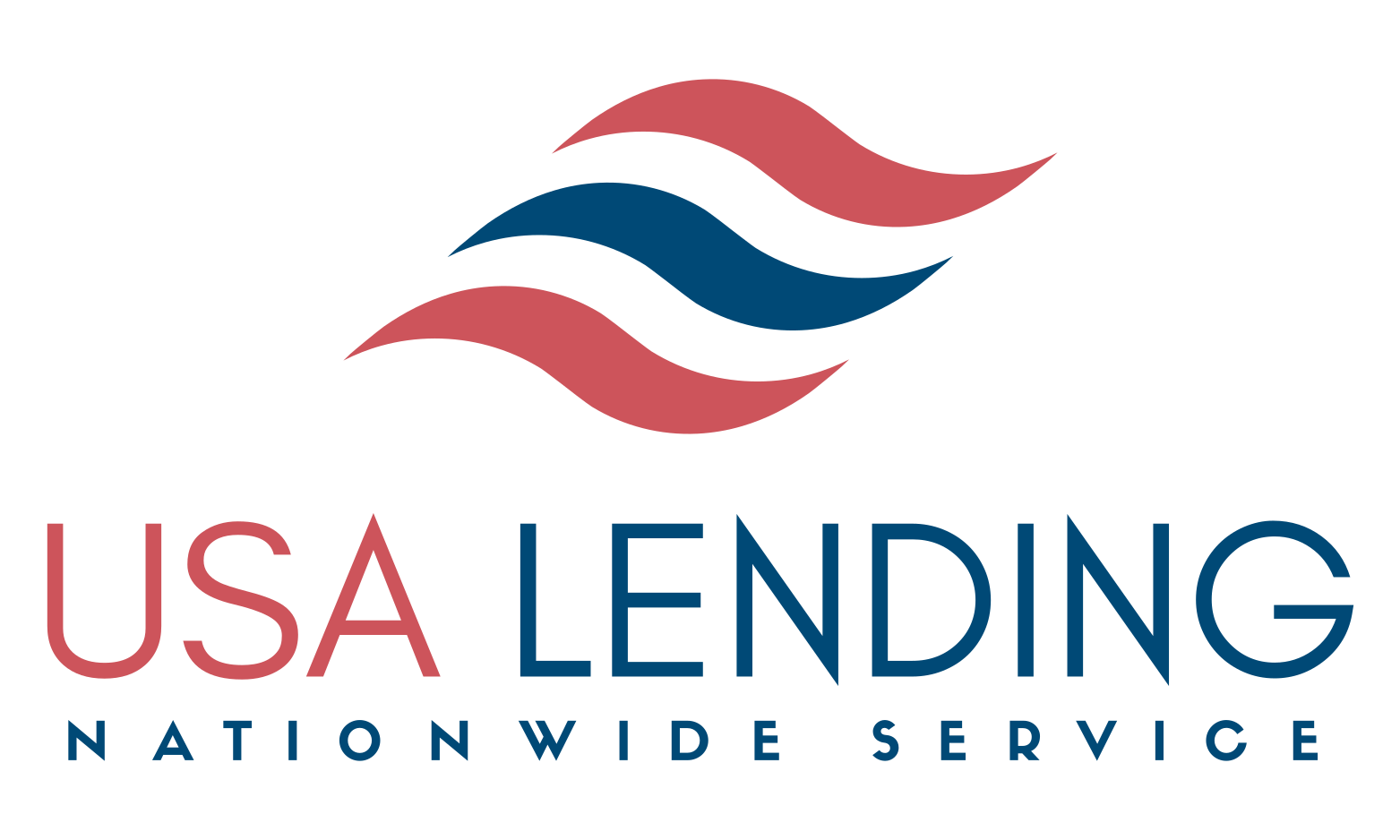When you finance a home or any other property, the first hurdle that often comes…
How to Pay Off Your Mortgage Faster: Smart Strategies for Building Equity in 2024
Paying off a mortgage faster is a common financial goal that can relieve borrowers of a significant long-term debt and free up substantial monthly income. It’s not just about making extra payments; it’s about understanding the intricacies of your mortgage terms, how interest is calculated, and what options you have for reducing the principal balance faster than the agreed term.
By exploring strategies that range from refinancing to making bi-weekly payments, we can employ various tactics to save on interest and accelerate the path to owning your home outright.

Key Takeaways
- Making extra payments reduces both the principal balance and the interest over the life of a mortgage.
- A well-planned budget is crucial for consistent additional payments towards the mortgage.
- Understanding the terms and conditions of your mortgage, including penalties and recasting options, is vital for making informed payoff decisions.
Budgeting carefully for additional mortgage payments not only chips away at the principal faster, but also reduces the amount of interest you’ll pay over the life of the loan. It’s a clear-cut case of short-term sacrifices yielding long-term gains. It’s also essential to be aware of any prepayment penalties that could be in place and to consider the impact of mortgage recasting. Tools like mortgage payoff calculators can be invaluable in planning and tracking your progress. With the right strategies and a clear understanding of the process, we can take firm steps towards achieving mortgage freedom sooner than anticipated.
Understanding Your Mortgage
When we approach mortgages, it’s crucial to understand their components, how interest is applied, and the ramifications of the loan term. Grasping these aspects can significantly impact how we manage and pay off our mortgages.
Components of a Mortgage
The core elements of a mortgage consist of the principal and the interest. The principal is the actual amount we borrow to purchase a home. As we make monthly payments, a portion goes towards reducing this principal. On the other hand, the interest is the lender’s charge for borrowing that principal. Initially, more of our payment is typically applied to interest, but as the principal lowers, the interest charged decreases correspondingly.
How Mortgage Interest Works
Interest rates can be fixed or adjustable. With a fixed-rate mortgage, the interest rate remains constant throughout the loan term, which simplifies budgeting as our monthly principal and interest payments stay the same. Conversely, an adjustable-rate mortgage (ARM) can fluctuate over time, affecting the amount of interest we pay and our monthly payments.
Mortgages commonly use an amortization schedule, showing a decrease in the interest portion and an increase in the principal portion of our payments over time. This method ensures the mortgage is paid off by the end of the term if all payments are made as agreed.
The Effects of Loan Term on Your Mortgage
Our mortgage’s loan term, typically 15, 20, or 30 years, influences both the size of our monthly payment and the total amount of interest we’ll pay over the life of the loan. A shorter loan term often entails higher monthly payments but allows us to pay off the principal faster and save on total interest paid. Conversely, a longer loan term generally results in lower monthly payments but increases the total amount of interest we’ll pay over time.
By understanding these key components—principal, interest rate, loan term, and amortization—we can make informed decisions that might enable us to save money and pay off our mortgage faster.
How to Pay Off Your Mortgage Faster By Budgeting for Extra Payments
To quickly reduce the principal balance on our mortgage, we need a solid plan for making extra payments. This involves creating a detailed budget and identifying additional sources of income that can be directed toward our mortgage.
Creating a Budget Plan
First, we assess our monthly income and expenses to establish a budget. We categorize spending to pinpoint where we can cut back and direct that money to our mortgage. For example, dining out less frequently or canceling unused subscriptions can free up additional funds.
- Monthly Income
- Salary: $3,000
- Freelance Work: $500
- Expenses
- Mortgage: $1,200
- Utilities: $300
- Groceries: $400
- Total Essential Expenses: $1,900
- Total Discretionary Expenses: $600 (e.g., dining out, entertainment)
- Potential Savings for Extra Mortgage Payment: $200 by reducing discretionary spending
Identifying Extra Money Sources
Next, we look beyond regular income for sources of extra money. A work bonus, tax refund, or money from a side job can all be put toward our mortgage. If we receive a $1,500 tax refund, for instance, that can make a significant impact on our mortgage balance when applied as a lump-sum payment.
- Extra Money Sources:
- Annual Bonus: $2,000
- Tax Refund: $1,500
- Savings Account Interest: $50
By committing these additional amounts to our mortgage, we can significantly shorten our loan term and reduce the total interest we pay over time. Remember, even small contributions can lead to big savings in the long run.
Strategies to Pay Off Your Mortgage Early
We can tackle our mortgage effectively by incorporating strategies that cater to our financial capabilities, potentially saving money on interest and bringing us closer to the dream of owning our home outright.
Making Biweekly Payments
By opting for biweekly payments rather than monthly, we essentially end up making one extra payment each year. This means we’ll pay less in total interest and can reduce the life of our loan. It’s important to consult with our lender to ensure that the extra payments go toward the principal and not the following month’s payment.
- Biweekly Payments Example:
- Ordinary Monthly Payment: $1200
- Biweekly Payment: $600
- Payments per year: 26
- Total Annually: $15,600 (versus $14,400 with standard monthly)
Additional Principal Payments
Any extra principal payments we can make will directly reduce our loan balance and the interest charged on it. Even small additional amounts can make a significant difference over time. We can use a mortgage payoff calculator to see how these extra principal payments will affect our loan over the long term.
- Extra Principal Payments Sample:
- Regular Monthly Payment: $1200
- Additional Principal: $100
- New Monthly Payment: $1300
- Impact: Less interest over the life of the loan
How to Pay Off Your Mortgage Faster With Lump-Sum Payments
Whenever we come into extra cash, such as a tax return or a bonus, applying this as a lump-sum payment toward our mortgage can be a powerful method to reduce our principal balance quickly. One lump-sum payment can potentially knock off a significant portion of interest as well as months, or even years, off our mortgage term.
- Lump-Sum Payment Impact:
- After 5 years on a $200,000 mortgage
- Lump-Sum Payment: $5,000
- Estimated Months Saved: Varies by interest rate and remaining term
- Estimated Interest Saved: Use a mortgage payoff calculator to determine
Implementing one or several of these strategies can help us pay off our mortgage early and allow us to save money on interest. It’s essential to review our financial situation and select the methods that align with our financial goals.
How to Pay Off Your Mortgage Faster with the All-In-One Loan Program
In the journey to financial freedom, the All-In-One Loan Program stands out as a revolutionary approach to mortgage repayment, designed to empower homeowners to pay off their mortgages faster and more efficiently. This unique financial solution combines the flexibility of a checking account with the benefits of a traditional mortgage, offering unparalleled control and efficiency in managing your home loan.
Key Features and Benefits:
- Quicker Equity Build-Up: The All-In-One Loan Program allows you to apply your income directly to the mortgage principal. This allocation towards the mortgage principal reduces the principal balance faster and decreases the amount of interest accrued over time, enabling quicker equity build-up compared to traditional mortgage structures.
- Interest Savings: By reducing your principal balance more rapidly, you incur less interest, leading to significant savings over the life of the loan. This innovative approach ensures that your money works harder for you, contributing directly to reducing your debt rather than merely covering interest costs.
- Increased Financial Flexibility: The program integrates your mortgage with a checking account, allowing you to access your home equity easily. Having access to your equity means you can withdraw funds above the principal, providing liquidity and flexibility for other financial needs or investment opportunities.
Strategic Financial Management:
Choosing the All-In-One Loan Program is not merely about paying off a mortgage; it’s about strategic financial management and making informed decisions that align with your long-term financial goals. This program is for those who seek to maximize their financial resources, offering a dynamic tool that adapts to your changing financial landscape.
A Personalized Approach:
Every homeowner’s financial situation is unique, and the All-In-One Loan Program acknowledges this by providing personalized solutions. Whether you’re a first-time homebuyer or a seasoned investor, this program meets your specific needs, offering a path to mortgage freedom that aligns with your financial objectives.
Embrace the Future of Home Financing:
The All-In-One Loan Program is more than just a loan; it’s a financial strategy that puts you in the driver’s seat of your mortgage management. By leveraging this innovative tool, you can optimize your financial resources, reduce interest expenses, and achieve mortgage freedom sooner than you might have thought possible.
For a deeper dive into how the All-In-One Loan Program can transform your approach to mortgage repayment and to schedule a personalized consultation, visit allinoneloan.usalending.ai.
How to Pay Off Your Mortgage Faster Refinancing Your Mortgage
In our quest to pay off a mortgage faster, refinancing is a strategic decision we can make to align our financial goals with changing market conditions and our personal circumstances. By refinancing, we potentially secure a lower interest rate, switch to a shorter loan term, and influence the overall cost of the loan.
When to Consider Refinancing
We should consider refinancing when interest rates have dropped since we took out our original mortgage or if our credit situation has improved, possibly qualifying us for better mortgage rates. If current interest rates are lower than our own rate by at least 1%, refinancing might be worthwhile.
- Current interest rate comparison: If the market rate is lower than our rate, it’s time to analyze possible savings.
- Financial status change: Improvement in our credit score or debt-to-income ratio might unlock lower rates.
Choosing a Shorter Loan Term
Switching from a 30-year mortgage to a 15-year mortgage can significantly accelerate our payoff timeline and reduce the total interest we’ll pay over the life of the loan. Although a shorter term usually comes with higher monthly payments, the trade-off is a lower interest rate and substantial long-term savings.
- 30-year to 15-year switch: Drastic reduction in interest over time despite higher monthly payments.
- Evaluate monthly budget capacity: Ensuring we can comfortably make the higher payments without financial strain.
Calculating the Cost of Refinancing
Refinancing isn’t free; we’ll incur closing costs that can range from 2% to 5% of the loan’s principal. We must crunch the numbers to determine if the savings from a lower interest rate will surpass these costs over time. It’s crucial to break-even before considering a move to maximize our benefits from refinancing.
- Break-even point: The time it takes for the monthly savings to exceed the closing costs.
- Long-term ownership plans: Staying in the home long enough is essential to reap the refinancing benefits.
Given these factors, we can make an informed choice about refinancing and set ourselves on a path to pay off our mortgage faster and save money in the long run.
Understanding Mortgage Prepayment Penalties
When we decide to pay off our mortgage early, it’s critical to consider potential prepayment penalties. These are fees charged by the lender to compensate for the interest they lose when we repay our loan ahead of schedule. Understanding the specifics of these penalties is essential to our financial strategy.
Here’s what we need to know:
- What Are Prepayment Penalties?
- A prepayment penalty is a clause in our mortgage agreement that states if we pay off the loan early, we may be subjected to a fee.
- How Is the Penalty Calculated?
- The fee can be a percentage of the remaining loan balance or equivalent to a set number of months of interest.
- Why Lenders Charge Penalties
- Lenders use prepayment penalties to deter borrowers from refinancing too quickly and to recover some of their lost earnings due to unpaid interest.
- Mortgage Recast vs. Prepayment
- A mortgage recast involves paying a lump sum toward the principal and having the amortization schedule (and often our monthly payment) recalculated based on the new balance. Recasting typically doesn’t invoke a prepayment penalty.
- How to Avoid Penalties
- We can avoid these penalties by choosing a loan that doesn’t include them or by only paying off our mortgage when the penalty period has expired.
- Tip: Before making extra payments or paying off our mortgage, we should read through our loan documents or speak with our lender to understand any prepayment penalty details.
By familiarizing ourselves with the terms of our mortgage agreement regarding prepayment penalties and considering options like a mortgage recast, we position ourselves to make informed decisions about managing our home loan.
Using a Mortgage Payoff Calculator
When we aim to pay off our mortgage faster, a mortgage payoff calculator becomes an indispensable tool. This calculator allows us to input various details of our loan—such as the loan amount, the interest rate, the term, and any extra payments we’re considering—to see how these factors affect our payoff schedule and interest savings.
Here’s how we can use it effectively:
- Enter the Loan Amount: This is our original mortgage amount or our current outstanding balance if we’re already making payments.
- Specify the Interest Rate: This rate greatly influences our monthly payments and the total interest paid over the life of the loan.
- Input Current Mortgage Details: Adding our current payment details helps the calculator determine how much time and money we can save by making extra payments.
- Experiment with Additional Payments: By increasing our monthly payment or making one-off additional payments, we can observe the impact on the overall interest savings and the new early mortgage payoff date.
- Review the Amortization Schedule: The calculator provides an amortization schedule that outlines how each payment reduces our principal and interest over time.
- Analyze the Results: We can compare scenarios to see how extra payments shorten the term and reduce our total interest outlay. Here’s a simplistic example of the outcomes we might see:
| Extra Monthly Payment ($) | New Payoff Time (Years) | Interest Savings ($) |
|---|---|---|
| 0 (baseline) | 30 | 0 |
| 100 | 25 | 30,000 |
| 200 | 22 | 45,000 |
| 500 | 18 | 60,000 |
By using the mortgage payoff calculator, we can make informed decisions and develop a clear strategy to bring us closer to being mortgage-free. Remember, even small additional payments can lead to substantial interest savings and a sooner-than-scheduled freedom from our mortgage.
The Impact of Mortgage Recasting
When we choose mortgage recasting, we can manage our home loan in a way that could potentially save us money over time. Let’s explore what recasting a mortgage involves and how it compares to other strategies such as refinancing and making extra payments.
What is Mortgage Recasting?
Mortgage recasting is when we pay a large sum toward the principal balance of our loan and ask the loan servicer to recalculate our monthly payments based on the reduced balance. This typically results in lower monthly mortgage payments. However, unlike refinancing, the interest rate and loan term remains the same. It’s worth noting that lenders may charge a recasting fee, and not all loans are eligible for recasting.
Comparing Recast, Refinance, and Prepayment
Recast:
- Reduces monthly payments without changing the interest rate.
- Maintains the original loan term.
- Involves a recasting fee, usually a few hundred dollars.
Refinance:
- Can potentially get us a lower interest rate.
- Requires a new loan approval and closing costs.
- May extend or shorten the loan term.
Prepayment:
- Allows us to pay off the loan faster without the need to recast or refinance.
- No fees are involved.
- Does not change the monthly payment amount, but it reduces the total interest paid over the life of the loan.
When considering which option to pursue, we should weigh the savings against any potential fees and the impact on our financial goals. Recasting can be a sound strategy if we receive funds to pay down our loan and we want to lower our monthly expenses without altering our loan’s interest rate or term.
Final Steps to Mortgage Freedom
As we approach the culmination of our mortgage journey, it’s vital to ensure each step is completed thoroughly. This final phase solidifies our financial freedom and requires our attention to detail in securing the necessary documents that officially mark the end of our mortgage payments.
Requesting a Payoff Quote
When we’re ready to pay off our mortgage, the first action we’ll take is to request a payoff quote from our lender. This quote details the exact amount needed to pay off our loan as of the requested date and typically includes the remaining principal, interest, and any fees or penalties. It’s crucial to ask for this quote close to the intended payoff date because mortgage interest accrues daily.
Receiving the Deed of Trust
Once we pay off our mortgage, we’re entitled to receive the mortgage deed, also known as the Deed of Trust, which proves we own the property free and clear. The lender sends this document to us, signifying that their lien on our property is released. We must then file this deed with the local government office to update the public record.
Documentation After Paying Off Your Mortgage
After we have paid off our mortgage, we should receive several key documents: a certificate of satisfaction, the final mortgage statement, and the canceled promissory note. These items are evidence that our debt is fulfilled and of our official homeowner status without any mortgage obligations.
- Certificate of Satisfaction: This document confirms that the mortgage has been fully repaid and the lien on the property is lifted.
- Final Mortgage Statement: This statement outlines the last payment details and shows a $0 balance.
- Canceled Promissory Note: This note signifies that the loan agreement is no longer in effect as the loan has been paid in full.
By carefully handling these final steps, we secure not just our monetary investment but our peace of mind, knowing that we have successfully navigated the path to mortgage freedom.
Frequently Asked Questions
Paying off your mortgage faster is achievable with the right strategies, potentially saving you thousands in interest. Understanding how certain changes to your payment habits can impact your loan’s lifecycle is key to making informed decisions.
What strategies can be employed to significantly reduce the total interest paid on a 30-year mortgage?
By making one extra mortgage payment each year, you can significantly reduce the total interest you pay over the life of a 30-year loan. This extra payment directly lowers the principal balance, reducing the amount of interest that accumulates over time.
Is making bi-weekly payments instead of monthly payments beneficial for paying down a mortgage sooner?
Yes, opting for bi-weekly payments accelerates your mortgage payoff. This results in making one extra full payment per year, reducing the principal faster and decreasing the interest cost over the loan’s term.
How does adding extra principal payments affect the amortization schedule of a home loan?
Making extra principal payments on your mortgage reduces the balance owed more quickly and shortens the amortization period. The result is fewer payments over the life of your loan and less interest paid.
In what ways can refinancing a mortgage lead to quicker pay off without drastically changing monthly expenses?
Refinancing can potentially lower your interest rate, which can then lower your monthly payments. These savings can then be applied to the principal, effectively paying off your mortgage faster without a significant impact on your monthly budget.
Can dedicating windfalls such as bonuses or tax returns to mortgage payments make a significant impact on the loan term?
Absolutely, dedicating occasional windfalls like bonuses or tax returns to your mortgage can considerably shorten your loan term. Any large, unexpected sums of money applied directly to your principal balance will reduce the interest and time needed to pay off your mortgage.
What are the potential financial implications of accelerating mortgage payments on long-term savings and investments?
Accelerating mortgage payments can save you a substantial amount on interest, but it’s important to balance this with long-term savings and investments. Paying off your mortgage early could free up income later, which can be redirected towards retirement accounts, investment portfolios, or other saving opportunities.




